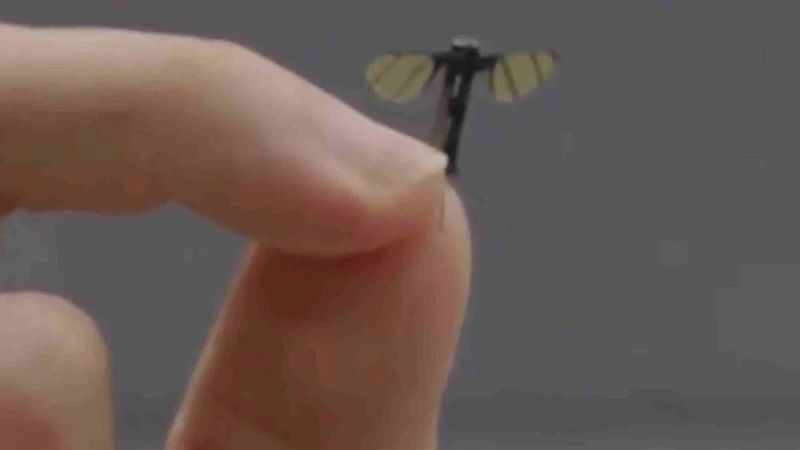
A Chinese defence research institution has revealed a spy drone that closely resembles a mosquito.
The bionic microdrone was showcased on China’s state-run military broadcaster, CCTV-7, on June 20.
“Here in my hand is a mosquito-like type of robot,” Liang Hexiang, a student at the National University of Defence Technology (NUDT), told the broadcaster.
“Miniature bionic robots like this one are especially suited to information reconnaissance and special missions on the battlefield,” he added.
About 2 cm long and weighing just 0.3 grams, the insect-inspired device features two tiny wings and three spindly legs.
The wings can flap at 500 times per second, according to a Korean newspaper, Chosun Ilbo.
The stick-thin body is packed with sensors intended for covert surveillance and other military operations.
The team also introduced a prototype with four wings controllable by a smartphone, according to the South China Morning Post.
While the report did not reveal exactly what sort of data it can collect, experts say, its minuscule size would make it difficult to detect using conventional radar systems.
Microdrones on trend
Microdrones like these are becoming increasingly common in modern warfare.
Several countries are actively exploring or already deploying similar technologies in the field.
For example, Norway’s palm-sized helicopter-style micro-UAV, dubbed Black Hornet, is already in use by multiple armed forces, including the US military.
The pocket-sized drone uses cameras and thermal imaging for quick, stealthy reconnaissance.
In 2006, the US Department of Defence’s secretive DARPA lab launched a project named Hybrid Insect Micro-Electro-Mechanical Systems (HI-MEMS) to create ‘insect cyborgs’ by placing micro-mechanical systems inside the insects.







